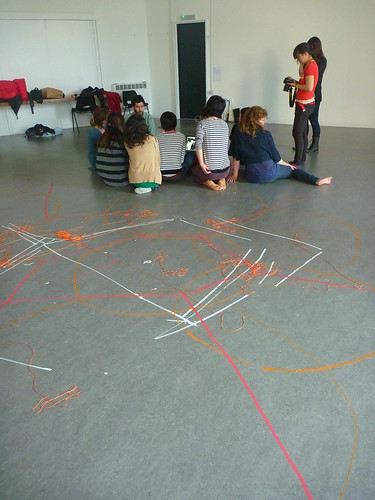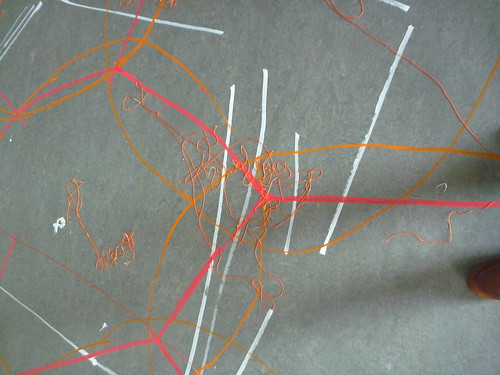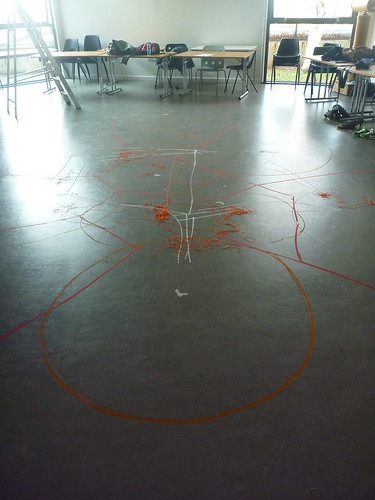Latest Crowd Sourcing News
Crowd sourcing environmental governance, March 2011 Goldsmiths U. Design & Environment

Image by cesarharada.com
www.designandenvironment.co.uk/2011/02/crowd-sourcing-env…
Close
“Crowd-sourcing Environmental Governance” workshop by Cesar Harada & Shannon Dosemagen.
2011 March 8 & 10, Design & Environment, Goldsmiths University of London.
Hello! Here is Cesar Harada and Shannon Dosemagen writing from the Gulf of Mexico, USA. We are thrilled to announce the upcoming hands-on workshop we’ll be having together in London : Come! And let’s ignite the discussion here.
ABSTRACT : Problem, Questions, Objectives
Each of us is not only witnessing, but actively participating in the degradation of our environment, our only life support system. The symptoms range from climate change, man made catastrophes, resource wars, resulting environmental refugees, etc. We are lacking a powerful environmental authority, a court of justice, and coordination in general. We have amazing earth science but poor individual education, international collateral treaties but no capacity to reinforce them. Governments and institutions are powerless to mitigate such complex and border-less issues. Can the solution emerge from the civil society? Can the people re-invent environmental governance with new technologies, collaborative medias, crowd sourcing, and mobile technologies? Do we need a central authority or can we generate decentralized, local, humble, bottom-up solutions? Can we design alternative services, products, technologies, infrastructures and behaviors as the new form of environmentalism. How can we go beyond activism and sustain long term positive change – what is your strategy?
WORKSHOP
Social Geometry, Architecture of play, Natural or Man-made Catastrophe, Humanitarian response to crisis, Crowd sourcing Environmental Governance. During 2 days, 10 students will be supervised by Cesar Harada (France – Japan) and Shannon Dosemagen (USA) at the Design & Environment department at the Goldsmith University, London. During the first half, they will experiment with social networks and how they can generate an operational organization and architecture. The students will be introduced to existing forms of environmental governance and cutting edge design and activism. During the second half, groups of students will elaborate their own designs in the area of their interest. Workshop leaders will help them model-building ideas that are creative, local, replicable and scalable. The workshop is aimed at starting a discussion, to encourage the students to take action in the “real world” and have short-term local experiments to learn from.
THE PEOPLE : Students, Workshop leaders
The workshop for the Design & Environment students from Goldsmiths University will require the students to venture their thinking into diverse fields : architecture, law, economy, politics, environmental engineering, anthropology, computer science, social media etc. The groups projects are expected to be diverse and exploratory. Cesar Harada has a background in Design Interactions at the Royal College of Art, won the Ars Electronica Golden Nica [NEXT IDEA] with the Open_Sailing project, worked as project leader and researcher at MIT, and is coordinating the making of the WEA (World Environment Action) website started in *iHub_ Nairobi, Kenya. Cesar is currently coordinating the development of Protei : an oil cleaning open hardware robot.
Shannon Dosemagen has a background in Anthropology from the University of Milwaukee, Wisconsin. Shannon is the coordinator of the Oil Spill Map at LA Bucket Brigade, mapping the Deepwater Horizon Oil Spill in the Gulf of Mexico, using Ushahidi, a software allowing people to report by SMS, twitter, mail, on the acclaimed website oilspill.labucketbrigade.org. Shannon has also been piloting the aerial mapping of the Oil Spill by communities as part of the Public Laboratory group. Shannon has extensive community, field and teaching experience, interested in social implications of environmental events, and environmental refugees in particular.
DAY 1 : March 8th
Morning : Oil Spill mapping, World Environmental Action. Environmental governance and cutting edge activism. Groups brainstorming.
Afternoon : Social networks and Architecture of Play (choreography, construction)
DAY 2 : March 10th
Morning : Design. Theory in practice.
Afternoon : Thinking by doing.
Evening : Presentation of project ideas.
Discussion
We would like to start asking questions to open up the discussion, please comment below and ask more questions – we’ll answer in line 🙂
1>> When you think about environmentalism, what comes first to your mind? Is it the little actions like recycling / the activist social group / the green ‘leaders’ / green designs and brands / the materials we use / scientific research / global warming / your own body / your children / the philosophical current / something else? Which action has the strongest and longest lasting impact? Can you make a personal numbered list below here, in the comments?
2>> When you think about environmental politics, what comes first to your mind? How do you feel about the current relation between the environment and politics today? How does it affect the majority of peoples life?
3>> As a designer what do you think is your role about environmental issues?
Feel free to contact us before and after the workshop : contact {at} cesarharada {dot} com _ shannon {at} publiclaboratory {dot} org. Looking forward to meet you all! Cesar and Shannon.




